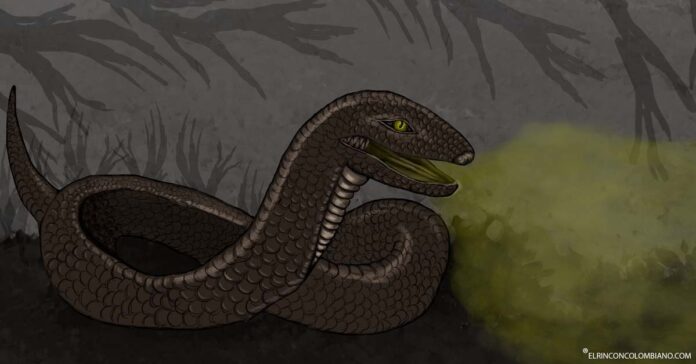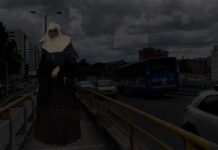The legend of the Colombian Basilisk or the guide either buío tells the story of a giant snake that appeared on the roads to the Casanare plains and devoured people.
According to legend, in colonial times along the roads that led from Sogamous Towards the plains of Casanare, a large snake known as the güío, buío or bujio appeared. This large snake that measured around 8 meters long by 1 meter in diameter hid in lonely places and in the forests near the road to attack. to their prey.
(Also read: Legend of the Cienaguero Caimán, the tragic story of Tomasita)
It is said that this creature was very slow and that one of its great abilities was to exhale a pestilent vapor with which it paralyzed and attracted its victims, whether they were large animals or people.
This creature had no teeth or fangs and due to its large size and slowness it was impossible for it to sting or roll up its victims, which is why its paralyzing breath was its most powerful weapon.
Origin of the legend of the Colombian Basilisk
The legend of the güío or legless basilisk may well be based on some real events since güío or buío is one of the names by which the Boa constrictor is known and it is well known that these snakes can measure between 4 and 5 meters.
In the 1741 work of the missionary Joseph Gumilla describes the güío in the following way: "of the poisonous snakes of those countries and their practical remedies." "The first horrible serpentine... is the buío which the Indians call jirará aviofa... its length usually reaches eight yards... because it is found with great frequency... in the lagoons and rivers, where it usually lives..." however, he who knows the long reach of the stinking vapor from his mouth, he puts his greatest security to flight... a vapor so poisonous, and effective, that it stops, stupefies and renders immobile the animal that attacked...".
(Read Also: Legend of the Alligator Man, the punishment for spying on women in the river)
Many of these statements are false since they were based on testimonies from farmers who used to mix reality with mythology and their own imagination, but it is quite possible that the Colombian basilisk could have been a boa constrictor that roamed the area at that time.
It should be noted that the basilisk is a mythological creature from Greek culture. As the centuries went by, this legend or myth spread to other European countries, which adopted it and even modified the appearance of the original, which was described as a large snake that killed with its gaze, then the legend changed and this creature became a small snake with a white mark on its head, which is why it was called the king of snakes; Later in other countries it began to be described as a rooster with the body of a toad and the tail of a snake; In many other versions they give them other characteristics.
In fact, in nature there is an animal called “common basilisk” and it is a lizard from Central America.
Other Versions of the legend of the Colombian Basilisk
In addition to the legend of the giant Guio, there is in Colombia the legend of the Bad Chicken or Evil Chicken, which is also sometimes considered part of the mythology of the basilisks.
(Read here: Legend of the Bad Chicken or the Devil's Chicken)
What does the Colombian basilisk look like?
The Colombian Basilisk was described as a snake 8 meters long and 1 meter in diameter, it had no teeth, was very slow and emitted a foul mist or breath that paralyzed its victims.
Where does the Colombian basilisk appear?
It appeared from Sogamoso on the roads towards the Casanare plains.
How to protect yourself from Guio (Colombian basilisk)?
Apart from being careful and being vigilant against any appearance, there is no method on how to protect yourself from the creature. It should be noted that this creature appeared during the colonial era, so if it ever existed, it may have already died.
Did you like this article? Leave your opinion in the comments and share this story with your friends and acquaintances so they can discover our unique stories.





